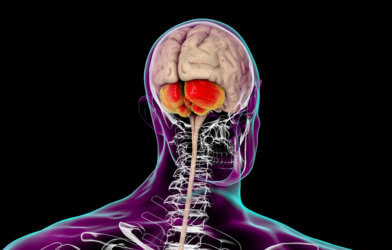Research has demonstrated consistently that autism is not a one-size-fits-all diagnosis. Clinical trials for medications on large populations of autisitc individuals have proven unsuccessful in the past because of this fact. Researchers recently uncovered a variation that may help tailor future clinical trials to those struggling with visual stimuli, thus resulting in more successful trials and a brighter future for potential medications.
A new study by researchers at King’s College London (KCL) has found variations in the way a brain chemical called GABA regulates the processing of visual stimuli. Their research demonstrated the visual processing of autistic people becomes more similar to that of a non-autistic person when given a drug that activates GABA targets. This link may be useful in identifying new possibilities for the treatment of autism.
GABA is a brain chemical that serves as a messenger regulating the activity of nerve cells in the central nervous system. While it is yet unclear if the GABA system functions differently in the living human brains of autistic people, current genetic and post-mortem research indicates the GABA pathway varies in autistic and non-autistic individuals.
“We have known for some time that the GABA pathways in the brain might play a role in the way autistic people process visual information and the behaviours that rely on this information. What we have in this study is the first direct evidence that a specific visual response in the human brain is regulated by GABA, but quite differently in neurotypical and neurodiverse individuals,” explains joint first-author Dr. Qiyun Huang, a research associate at the Institute of Psychiatry, Psychology & Neuroscience (IoPPN) at KCL, in a statement. “By measuring how this visual response is changed, we can potentially identify promising new interventions,” he added.
In their study, researchers used electroencephalogram (EEG) recordings to measure brain activity in the visual processing region when responding to a series of high and low contrast visual stimuli. Their responses were measured both with and without arbaclofen, a drug which switches on GABA type B receptors.
The findings uncovered in this study have potentially laid important groundwork for a larger clinical trial to advance towards treatments and interventions. “Our approach pioneers a new way to assess whether there is a difference in the function of brain chemical pathways responsible for processing sensory information in autism, and whether those pathways can be altered. This work may help us screen potential interventions which might be useful in autism before embarking on expensive large-scale clinical trials,” said Grainne McAlonan, Professor of Translational Neuroscience at IoPPN.
“It also suggests that we should investigate arbaclofen’s effects on clinically relevant sensory symptoms which can be very debilitating for some autistic people. Importantly, we have been able to identify which individuals have a brain response to arbaclofen, and this may also help us avoid including people in clinical trials who are unlikely to respond to the medication being tested. The overarching goal is to increase choices for autistic people and to better tailor interventions to those most likely to benefit,” added McAlonan.
Results showed that a 30mg dose of arbaclofen caused disruption in the visual processing of non-autistic adults, while autistic adults at the same dosage visually processed more similarly to their non-autistic peers at baseline. This suggests that arbaclofen may be a potential treatment for autistic individuals who struggle with processing visual stimuli.
“This is an excellent example of neuroscience research providing new insights which could improve future clinical trials in autism,” said joint senior author Declan Murphy, Professor of Translational Neurodevelopment at IoPPN. “Later stage clinical trials that have tested new medicines in large numbers of autistic people have so far been unsuccessful, because participants have diverse difficulties and biology. Better understanding of brain chemistry in neurodiverse individuals could help provide a more personalised and effective way to assess new therapeutic options.”
This study was published in Science Translational Medicine.
Article by Anna Landry












Comments